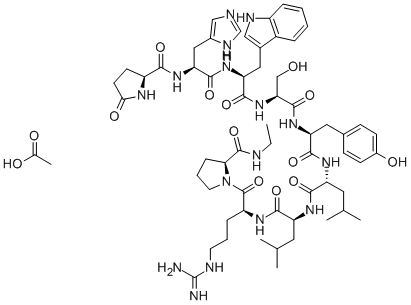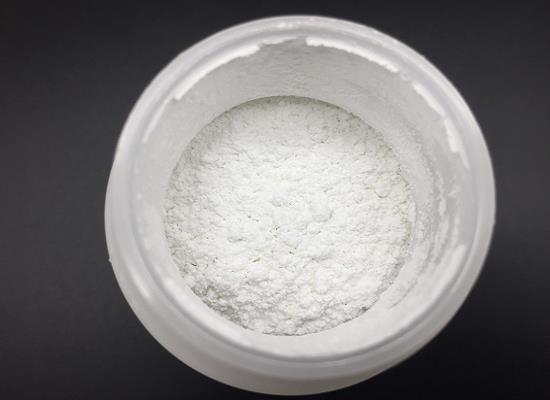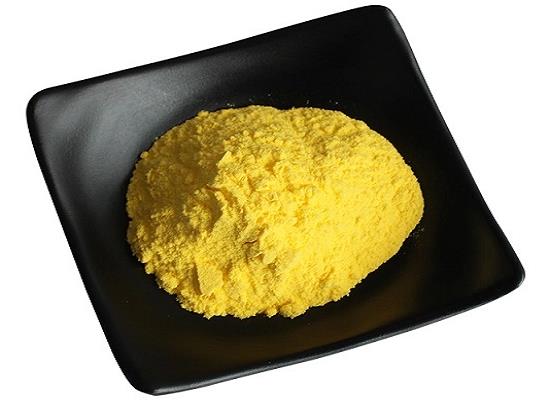Leuprorelin: Pharmacodynamic Properties, Dosage and Administration
General Description
Leuprorelin is a synthetic analogue of gonadotrophin-releasing hormone that acts as a potent agonist, initially stimulating the release of gonadotrophins and increasing sex hormone levels. Long-term use leads to desensitisation of the pituitary gland, thereby reducing circulating gonadotrophins and sex hormones, which is effective in treating conditions like prostatic cancer, endometriosis, and precocious puberty. Dosage recommendations vary, with adults receiving depot leuprorelin dosages of 3.75 milligrams monthly in Europe and Japan or 7.5 milligrams in the United States. In children, dosages depend on body weight, while adjustments are made based on clinical assessments, particularly in special cases like in vitro fertilisation.
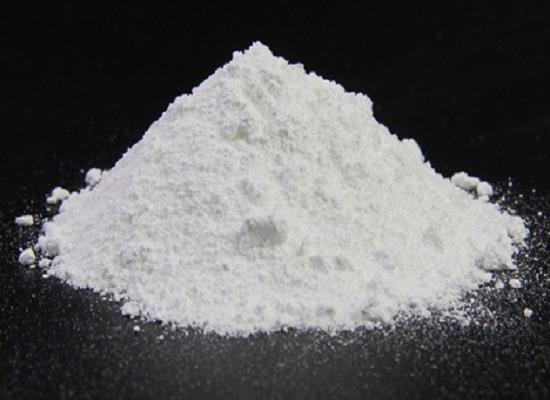
Figure 1. Leuprorelin
Pharmacodynamic Properties
Mechanism of Action
Leuprorelin is a synthetic analogue of gonadotrophin-releasing hormone that functions as a potent agonist. Upon administration, leuprorelin initially stimulates the anterior pituitary gland to release various gonadotrophins, including luteinising hormone and follicle-stimulating hormone. This surge leads to an increase in circulating levels of sex hormones, such as testosterone in males and estrogen in females. However, the continued use of leuprorelin results in the desensitisation of the pituitary gland, ultimately leading to a down-regulation of gonadotrophin release. This pharmacodynamic property is crucial because, within a timeframe of approximately two to four weeks, leuprorelin effectively reduces circulating sex hormone levels, which are maintained at suppressed levels as long as treatment continues. Consequently, leuprorelin is utilized in the management of various conditions associated with excessive sex hormone activity, such as prostatic cancer, endometriosis, precocious puberty, and uterine leiomyomata. 1
Histological Effects
Long-term administration of leuprorelin has been demonstrated to have significant histological impacts, particularly in male patients suffering from prostatic cancer. Studies show that administering leuprorelin at doses between 1 to 10 milligrams per day for up to 24 months leads to a marked suppression of spermatogenesis and a decrease in Leydig cell activity. This treatment causes observable changes, including thickening of the peritubular membrane. Furthermore, in pre-clinical trials using a rat model of endometriosis, leuprorelin effectively inhibited the growth of transplanted endometrial tissue in a dose-dependent manner. This suppression correlated with a notable reduction in serum estradiol levels, showcasing the drug's efficacy in managing hormone-related disorders. 1
Broader Implications and Mechanisms
The principal pharmacodynamic property of leuprorelin revolves around its ability to induce pituitary desensitisation, thereby diminishing serum gonadotrophin and sex hormone levels. However, the exact mechanisms underlying this desensitisation are not entirely elucidated. It remains uncertain whether the action of leuprorelin stems from diminished binding to gonadotrophin-releasing hormone receptors, uncoupling from intracellular signaling mechanisms, or non-receptor-mediated pathways. Additionally, in vitro studies suggest that leuprorelin may exert direct effects on the smooth muscle of the reproductive tract, specific breast cancer cell lines, and perhaps ovarian function. Notably, while leuprorelin's primary action is well-documented, the potential for direct antitumour activity in prostatic cancer remains a topic of ongoing investigation, indicating a need for further pharmacodynamic studies to clarify its comprehensive therapeutic ranges. 1
Dosage and Administration
Dosage Recommendations for Adults
Leuprorelin is administered in specific dosages based on the condition being treated. For men diagnosed with prostatic cancer, the recommended dosage of depot leuprorelin is 3.75 milligrams in Europe and Japan or 7.5 milligrams in the United States, given either intramuscularly or subcutaneously once a month. Alternatively, an aqueous formulation of leuprorelin can be administered subcutaneously at a dosage of 1 milligram per day. For women suffering from endometriosis or uterine leiomyomata, the dosage is similar, with a recommendation of 3.75 milligrams administered monthly via intramuscular or subcutaneous injection for up to six months. Prolonged treatment may lead to detrimental effects on bone mineral density, thereby limiting the duration of leuprorelin therapy in these populations. 2
Dosage Recommendations for Children and Special Cases
In children with precocious puberty, the recommended dosage of leuprorelin varies internationally. In the United States, the initial administration is based on body weight, starting at a dosage of 0.3 milligrams per kilogram, with a minimum of 7.5 milligrams for those weighing around 25 kilograms. For those weighing between 25 to 37.5 kilograms, the dosage is 11.25 milligrams, and for individuals exceeding 37.5 kilograms, it is 15 milligrams. The dosage may be adjusted monthly by increments of 3.75 milligrams according to clinical assessments. In some European countries, the starting dosage is 1.88 milligrams for children weighing around 20 kilograms and 3.75 milligrams for those over 20 kilograms. In Japan, the usual dosage is 30 micrograms per kilogram, which can be increased based on the clinical status of the child. Additionally, for women undergoing in vitro fertilisation, a typical leuprorelin dosage ranges from 0.5 to 1 milligram per day, tailored to the individual's response during the treatment cycle. 2
References:
[1] ANDREA C WILSON. Leuprolide acetate: a drug of diverse clinical applications.[J]. Expert opinion on investigational drugs, 2007, 16 11. DOI:10.1517/13543784.16.11.1851.[2] G L PLOSKER R N B. Leuprorelin. A review of its pharmacology and therapeutic use in prostatic cancer, endometriosis and other sex hormone-related disorders.[J]. Drugs, 1994, 48 6. DOI:10.2165/00003495-199448060-00008.
You may like
Related articles And Qustion
See also
Lastest Price from Leuprorelin manufacturers

US $0.00/kg2025-09-30
- CAS:
- 53714-56-0
- Min. Order:
- 1kg
- Purity:
- 98%
- Supply Ability:
- 1000kg
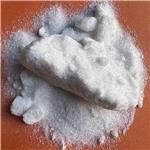
US $1.00/g2025-09-22
- CAS:
- 53714-56-0
- Min. Order:
- 10g
- Purity:
- 99
- Supply Ability:
- 999
